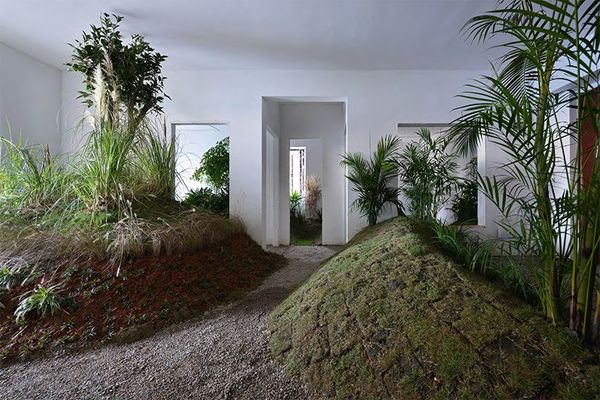In 2019, eight young designers and design theorists could participate in the six-month Moholy-Nagy László Design Grant, managed by the Hungarian Design Council and financed by the Hungarian Intellectual Property Office and the Ministry of Human Capacities. In the course of the program, the grantees could implement their self-developed projects or projects developed in collaboration with manufacturers. Learn more about them here, on HYPEANDHYPER. Apol Temesi – RAWfiction – GEO
Unfortunately, the exhibition presenting the works of the grantees scheduled to the end of March was cancelled due to the coronavirus epidemic. As a way of making up for this event and complementing the remarkable catalogue already published or “making it more alive,” we will present you their projects in the next eight weeks.
Apol Temesi graduated from Moholy-Nagy University of Art and Design in 2014 as a textile designer. She started to focus on structure design in the year preceding her graduation, which not only turned out to be an unexpected source of joy, but she also won a Micro Architectura award on an international competition.
She continued her studies at the Doctoral School of MOME in 2016, where she chose raw material-based material development as her area of research – in addition to the theoretical work, she also looked for practical answers through various projects. Her first and quite spectacular series was named LAMBSKIN.
With this project, Apol won a spot in the Climate-KIC Accelerator program in 2018, where, after winning further awards and sponsorships, she was able to dive deep into a material development solution with which she could create a scalable product with the 100% recycling of industrial woollen waste. This was when she started the RAWfiction project.
Support from the profession
In the framework of the Moholy Grant, Apol was able to develop a product that has long been a dream for her, and which has been preceded by long years of work. “In the course of raw material-based design, the starting point is the thorough understanding of the material, it focuses on the its beneficial and potential features, therefore, it’s possible that preliminary expectations are overridden by the materials natural behavior. This finetuning was necessary during the six months regarding some issues, so that preliminary expectations and natural attributes could reinforce each other” – Apol told us.

“Getting support from the profession is an outstanding opportunity for implementing and debuting a thoroughly prepared concept. The continuous consultations with the members of the grant committee and the pieces of personal advice I received from them drew my attention to important matters that helped me examine the issue of marketability and scalability, too” – she added.
The textile designer highlighted that the GEO tile set implemented in the framework of the Moholy Grant was a huge step for her; it opened up perspectives that marked her path in the long run – natural-based circular product development is gaining momentum in Hungary, too, further supported by the openness of interior design studios.
The project – RAWfiction – GEO
Taking into consideration the endeavors of the well-being international standard, coordinating natural materials and adequate acoustics becomes increasingly important in the field of interior design. In the field of design, the traditional approach on raw materials is replaced by a more conscious use and the more cautious choice of local materials. As an alternative to cheap yet harmful materials, recyclable natural materials are used more frequently, which, in addition to creating a healthier environment, also point us to the direction of more conscious use of materials, that is, a more sustainable object culture.
The circular design approach serving as the source of inspiration for the RAWfiction project focuses on the beneficial characteristics of raw materials, and gives new life to leftover materials by unfolding their potential. This approach is applied in the case of the GEO tile set, too, which is a special acoustic coating developed using regional industrial woollen waste, with a unique technology.
“With the new method developed in the course of reviving the material, such a thickness can be achieved that can exceed sizes manufactured in industrial production, and so the pressed tiles perform outstandingly in terms of acoustics. The raw material being a burden for the industry cannot only exploit its good qualities in the field of interior design as a natural material, but also as a functional surface” – the textile designer added.
In the course of her research, Apol experimented with restructuring and pressing woollen waste, exploring new aesthetic opportunities, and she also examined the possible fields of use of another textile waste that is generated in large quantities: cotton. The final result of her experiments is a re-pressed modular wool tile panel system, made up of equal-sized modules with 1:4 aspect ratio. The size and ratio of the modules allows a wide range of pattern variations – similarly to the laying of regular tiles –, at the same time, a panel with a unique pattern can be created every time owing to the natural material and the finishing.
The future goals of the designer include the finalization of the RAWfiction – GEO woollen tile set, as well as the implementation of further module systems. Continuing raw material-based design, Apol also works on a product family encompassing other materials, by keeping acoustic function and interior design needs in mind at all times.

An apartment converted into a park in a tower block

Online knowledge sharing (not only for creatives)










